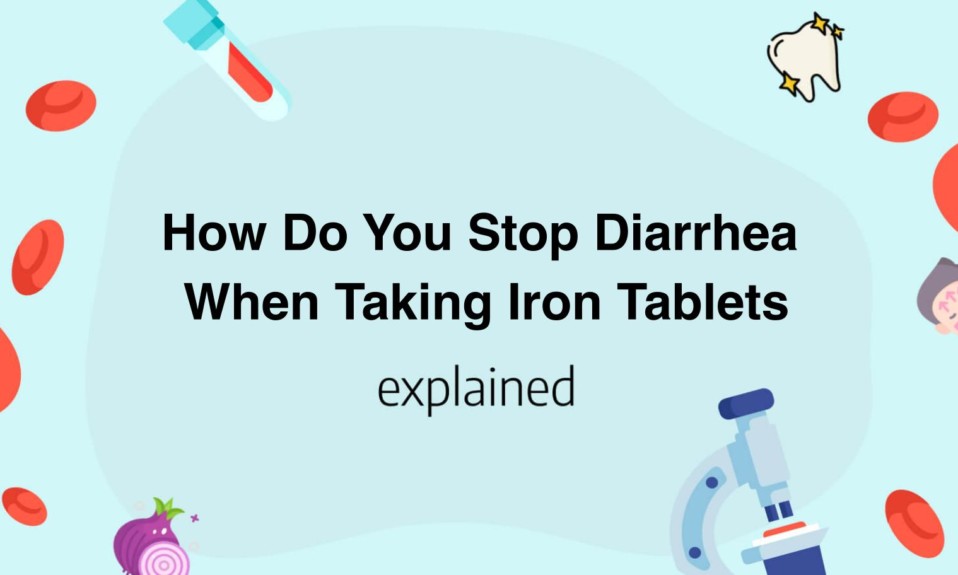Heal Tennis Elbow with proven methods and treatments that have helped millions of people worldwide.
Get relief from the pain and discomfort caused by this common condition that affects athletes, manual laborers, and office workers alike.
Discover effective strategies for preventing and treating tennis elbow, including exercise, rest, therapy, and medication.
Whether you are a casual player or professional athlete, read on to learn how to heal tennis elbow and get back in the game.
- Rest the affected arm and avoid activities that aggravate the condition.
- Ice the affected area for 15-20 minutes several times a day to reduce pain and inflammation.
- Use a brace or strap to support the affected arm during activities that may cause strain.
- Stretch and strengthen the muscles and tendons in the forearm through targeted exercises.
- Consult a healthcare professional for additional treatments such as medications, physical therapy, or surgery if necessary.
How to Prevent Tennis Elbow
Tennis elbow is a condition that affects many people, not just tennis players.
It’s a type of repetitive strain injury that occurs when the tendons of the forearm muscles become inflamed due to overuse.
There are a few ways to prevent tennis elbow from occurring.
First, it’s important to maintain proper form while playing any sport that involves the use of the arms.
When playing tennis, use the correct grip size and change grips between shots to reduce stress on the tendons.
Additionally, stretching before and after playing can help reduce the risk of injury.
Strengthening exercises can also be helpful in preventing tennis elbow, as strong forearm muscles are less likely to become strained.
If you work at a job that involves repetitive motions, such as typing or using a computer mouse, take frequent breaks and stretch your arms and hands.
Use proper ergonomics, such as keeping your wrist straight while typing, to reduce the strain on your tendons.
Cross-training can also help prevent tennis elbow, as it allows you to use different muscle groups and reduces the strain on any one group of muscles.
If you do end up developing tennis elbow, it’s important to rest and allow the tendons to heal.
Continuing to use the affected arm can worsen the condition and make it more difficult to recover.
Ice and anti-inflammatory medication can help to relieve pain and swelling.
In some cases, physical therapy or a brace may be recommended to help support the affected tendon and allow it to heal.
In conclusion, preventing tennis elbow is all about reducing strain on the tendons and using proper form and technique.
Strengthening exercises, stretching, and ergonomic modifications can all be helpful in preventing this condition.
If you do develop tennis elbow, rest and proper treatment can help you recover more quickly.
So, apply these preventive tips and stay safe from getting any tennis elbow injury!
The Main Causes of Tennis Elbow
Tennis elbow, also known as lateral epicondylitis, is a painful condition that affects the outer part of the elbow.
It is caused by repetitive movements of the wrist and forearm that lead to overuse of the tendons that attach to the lateral epicondyle bone.
The main cause of tennis elbow is repeated or prolonged gripping or twisting actions, which can happen during activities such as playing racquet sports, weightlifting, typing, painting, or gardening.
Improper technique or equipment can also exacerbate the problem.
Using a racquet with a grip that is too small, for instance, can place excessive strain on the tendons that attach to the elbow.
In addition, people who perform manual labor, such as carpentry or plumbing, are also at risk of developing tennis elbow due to the repetitive strain on their elbows and forearms.
Tennis elbow can also occur as a result of a sudden injury, like a fall or a direct blow to the elbow.
However, this type of injury is less common than the overuse caused by repetitive motions.
Other risk factors for tennis elbow include age, sex, and certain medical conditions.
Age-related changes in tendons can make them more susceptible to injury, and men are more likely than women to develop this condition.
People who have arthritis, diabetes, or thyroid problems may also be at a greater risk for developing tennis elbow.
To prevent tennis elbow, it is important to take frequent breaks when performing repetitive tasks and to use proper equipment and technique.
Stretching and strengthening exercises can also help to prevent this condition.
If you do experience symptoms of tennis elbow, it is important to rest the affected arm and seek medical treatment if the pain persists.
Effective Treatment Options for Tennis Elbow
Tennis elbow, or lateral epicondylitis, is a condition that causes pain and tenderness on the outer side of the elbow.
Often associated with repetitive motions such as gripping, lifting, or swinging, this condition can be debilitating and interfere with daily activities.
However, there are several effective treatment options for tennis elbow that can alleviate pain and promote healing.
- Rest: Rest is crucial in treating tennis elbow.Avoiding activities that aggravate the condition can help reduce inflammation and promote healing.
- Physical therapy: Physical therapy exercises can help strengthen the muscles and tendons in the affected area, reduce inflammation, and improve range of motion.A physical therapist can create a customized treatment plan to address individual needs and goals.
- Medication: Over-the-counter pain relievers such as ibuprofen and naproxen can help alleviate pain and reduce inflammation.In some cases, your doctor may prescribe stronger medication or a corticosteroid injection to ease pain and inflammation.
- Brace or strap: Wearing a brace or strap that supports the forearm can help alleviate the strain on the affected muscles and tendons.This can be especially helpful during activities that may exacerbate the condition.
- Surgery: In rare cases where other treatments have failed, surgery may be required to repair damaged tendons.This is typically an outpatient procedure and can provide lasting relief.
Resting the affected arm and using ice packs can also help alleviate pain.
Incorporating a combination of these treatment options may provide the best results for treating tennis elbow.
It’s important to work closely with your healthcare provider to determine the best course of action for your individual needs.
By taking steps to address the underlying cause of the condition and promoting healing, you can reduce pain and improve your quality of life.
Read also: How long does dry socket take to heal
How to Strengthen the Arm Muscles to Prevent Tennis Elbow
To prevent tennis elbow, it’s essential to strengthen the arm muscles.
Here are some tips and exercises that can help.
- Stretching: Before beginning any exercise, proper stretching is crucial to warm up the muscles.A simple wrist extension stretch is to hold the arm out in front of you, palm facing down, and gently pulling the fingers towards the body with the other hand.
- Grip Strengthener: Using a grip strengthener can help build forearm muscles.It can be done anytime and anywhere.
- Wrist Curls: Wrist curls are great for building wrist and forearm muscles.Holding a weight, sit comfortably with your forearm resting on a bench or table, and wrist hanging off the edge.
- Tennis Ball Squeeze: For this exercise, hold a tennis ball in the palm of your hand and squeeze it tightly, then release the grip.Repeat for several rounds with both hands.
- Eccentric Exercise: Eccentric exercises focus on strengthening the muscle by lengthening it.With tennis elbow, it’s usually the forearm extensor muscles that are affected.
To do it, squeeze the grip strengthener tightly for 10 seconds, release for 10 seconds, and repeat several times.
Then, with your palm facing upwards, slowly curl your wrist upwards towards the ceiling and lower it back down.
This strengthens the whole forearm, including the muscles responsible for gripping.
To do this exercise, hold a weight and extend the wrist upwards as usual, but lower it slowly to work the eccentric motion.
By incorporating these exercises into the workout routine, strengthening the arm muscles can help prevent tennis elbow.
It’s important to start slow and not overdo it, increasing the intensity and duration progressively.
Remember to stretch before and after the workout to avoid strains and discomfort.
Read also: How long do cut gums take to heal
The Top 5 Exercises to Reduce Tennis Elbow Pain
The Top 5 Exercises to Reduce Tennis Elbow Pain
- Wrist Extension – This exercise has proven to be effective in reducing tennis elbow pain.First, you will need to sit in a chair with your forearm placed on a table and your hand off the edge of the table, palm facing downwards.
- Wrist Flexion – This exercise helps to strengthen the flexor and extensor muscles that attach to your elbow.Sit in the same position as the Wrist extension exercise.
- Forearm Pronation and Supination – This exercise is to help promote supination and pronation of the forearm which increases the support to your elbow.To begin, sit with your elbow placed on a table with your forearm raised and palm facing downwards.
- Shoulder External Rotation – This exercise strengthens the muscles around the rotator cuff which helps in stabilizing your shoulder and elbow.To perform this exercise, sit on a chair with your elbow bent at a 90-degree angle, your forearm resting on a table, and your hand holding a light weight or can of soup.
- Triceps Extensions – This exercise is to help strengthen the muscles in the back of your upper arm which is important for supporting the elbow joint.To perform this exercise, stand with your feet shoulder-width apart and hold a weight with both hands.
You can use a light dumbbell or a can of soup as a weight.
Slowly bend your wrist upwards with your palm facing the ceiling and then slowly lower to the starting position.
Repeat this for 15-20 reps for a total of 3 sets.
This time, have your palm facing up, and hold the weight or can of soup with your hand.
Slowly bend your wrist down, bringing the weight towards your forearm, then slowly lift it back up to the starting position.
Repeat this for 15-20 reps for a total of 3 sets.
Hold a light weight or can of soup and slowly rotate your wrist and hand while keeping your elbow pinned to the table.
Do this for 15-20 reps for three sets.
Slowly rotate your arm outward, maintaining your elbow bent and your forearm stationary.
Repeat this for 15-20 reps for three sets.
Slowly bring the weight behind your head while keeping your elbows pinned to your head, and then lift the weight back up to the starting position.
Repeat this for 15 reps and 3 sets.
In conclusion, performing these exercises consistently can help reduce tennis elbow pain.
It is essential to seek a doctor’s advice before starting any new exercise routine.
Additionally, warming up, stretching, and cool down exercises are crucial to avoid further injury.
Remember to start with light weights and increase gradually to avoid any strain.
Read also:









